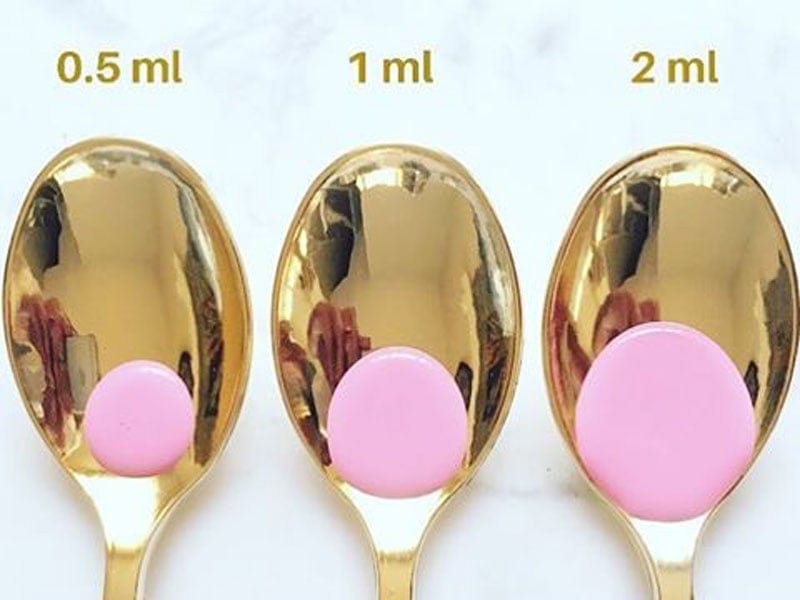When it comes to measuring liquids, precision is key. Whether you’re following a recipe, administering medication, or mixing skincare products, understanding the significance of 5 ml can make all the difference. This small yet mighty measurement packs a punch in various fields and applications. Have you ever paused to consider how often you encounter this specific volume? From your kitchen counter to the pharmacy shelf, 5 ml is more common than you might think. Dive into this comprehensive guide as we explore everything there is to know about 5 ml—its uses, tips for accurate measurements, and creative ways to incorporate it into your daily life!
What is 5 ml?
5-ml, or milliliters, is a unit of volume commonly used in the metric system. It represents one-thousandth of a liter, making it a compact measurement ideal for liquids.
This small volume is often found on measuring spoons and droppers. It’s particularly handy when precision is essential, such as in cooking or medical settings.
Visualize 5-ml as roughly equivalent to one teaspoon. This comparison can help you grasp its size more intuitively.
In various fields—culinary arts, pharmaceuticals, and science—5-ml holds significant importance. It’s frequently utilized for dosing medications and mixing precise ingredient amounts.
Whether you’re adding oil to a salad dressing or measuring out cough syrup, understanding what 5 ml represents ensures accuracy in your tasks.
Common Uses of 5 ml
5-ml is a small yet incredibly versatile measurement. You often encounter it in cooking and baking, where precision matters for flavor balance.
In the realm of medicine, 5-ml is frequently used to prescribe liquid medications. This ensures correct dosages for children and adults alike, making it crucial for health applications.
Cosmetic products also rely on 5-ml measurements. Many serums and oils recommend this quantity for effective application without waste.
Home remedies often call for 5-ml as well. Whether it’s essential oils or herbal tinctures, this measure helps maintain consistency across recipes.
Many laboratory experiments utilize 5-ml when conducting tests or mixing solutions. Accurate measurements are key in achieving reliable results in scientific research.
Measuring with 5 ml: Tips and Tricks
When measuring 5 ml, precision is key. A small amount can make a big difference in recipes or medications.
Use a clear measuring spoon or syringe for accuracy. These tools allow you to see the liquid level clearly and help prevent overflow.
If you’re using traditional spoons, remember that a standard teaspoon holds about 5-ml. This handy trick works well when you don’t have specialized equipment on hand.
For dry ingredients, slight adjustments may be necessary since density varies among substances. Use leveled scoops for consistency!
Always check your tool’s calibration if it has one. Using an uncalibrated instrument can lead to inaccuracies in measurement.
Practice makes perfect. The more comfortable you become with measuring out 5 ml, the easier it will be to achieve consistent results every time.
Converting Other Measurements to 5 ml
Converting other measurements to 5 ml can be surprisingly straightforward. A common conversion is with teaspoons. One teaspoon is approximately 5-ml, making it a handy reference for quick conversions in the kitchen.
For those using tablespoons, remember that one tablespoon equals about 15-ml. Therefore, if you need 5 ml, just measure out one-third of a tablespoon.
When working with fluid ounces, keep in mind that there are around 0.17 fluid ounces in 5-ml. This can help when adjusting recipes or dosages for medications.
If you’re dealing with cups or pints, things get a bit trickier due to their larger volume capacities. Nonetheless, knowing these conversions can simplify tasks significantly and ensure accuracy across your measuring endeavors.
How to Convert 5 ml to Other Measurements
Converting 5 ml to other measurements can be straightforward with a few key conversions in mind. For instance, 5 ml is equivalent to about one teaspoon. This makes it easy when following recipes or administering medications.
If you’re working in larger volumes, remember that 5-ml equals approximately 0.17 fluid ounces. When measuring for cocktails or specialty drinks, this conversion can come in handy.
For metric equivalents, 5 ml translates into five grams of water due to its density. However, keep in mind that the weight may vary if you’re measuring oils or syrups.
When precision matters, using a conversion chart can save time and avoid confusion. Apps are also available for quick references on the go! Whether cooking or crafting your next potion, knowing how to convert is essential.
Choosing the Right Measuring Tool for 5 ml
Selecting the right measuring tool for 5-ml can make a significant difference in accuracy and ease. Common options include measuring spoons, syringes, and dropper bottles.
Measuring spoons are handy for quick kitchen tasks. However, not all sets offer precise measurements to 5-ml. It’s essential to double-check your tools to ensure they provide accurate readings.
Syringes are excellent for liquid medications or more delicate recipes. They allow you to draw exactly 5-ml without spilling anything.
Droppers also work well, especially for oils or small quantities of liquids. Just remember that droppers vary in size—some may deliver less than 1 ml per drop, which can affect total volume if you’re trying to measure out multiple doses.
Consider what you’ll be using the measurement for when choosing your tool. This will help you find the best fit for your needs.
Creative Ways to Use 5 ml in Cooking and Baking
When it comes to cooking and baking, 5-ml can be your best friend. This small measurement is perfect for adding concentrated flavors without overwhelming your dish.
Try using 5 ml of vanilla extract in your cookie dough. It enhances the sweetness beautifully without overpowering other ingredients.
In salad dressings, a dash of oil or vinegar measured at 5-ml provides just the right amount of richness. Mix it with spices for a well-balanced dressing that elevates any green.
For sauces, consider incorporating 5-ml of hot sauce or soy sauce to give depth to marinades or glazes. It’s an easy way to experiment with flavor profiles.
Baking enthusiasts can add precise amounts of food coloring—just a few drops from a 5-ml bottle will yield vibrant results in cakes and frostings. Enjoy crafting delightful dishes while keeping measurements simple!
Tips and Tricks for Accurate Measurement with 5 ml
Measuring 5 ml accurately can make a significant difference in your recipes and medicinal doses. Start by using a syringe or a graduated measuring spoon designed for precise measurements. These tools help eliminate errors common with standard kitchen spoons.
Always check the meniscus, which is the curve at the liquid’s surface. Make sure you’re reading it at eye level to avoid parallax errors.
For liquids that cling to surfaces, like molasses or honey, lightly coat your measuring tool with cooking spray beforehand. This will ensure every drop is accounted for.
If you’re measuring out ingredients frequently, consider investing in digital scales that display volume as well as weight. It adds accuracy and saves time.
Practice makes perfect—don’t hesitate to measure repeatedly until you feel confident in achieving an exact 5 ml each time!
The Benefits of Using 5 ml in Medicine and Skincare
Using 5 ml in medicine provides precise dosing, ensuring that patients receive the correct amount of medication. This accuracy can be critical for effective treatment and minimizing side effects.
In skincare, a 5-ml measurement allows for controlled application of products. Whether it’s serums or oils, using this specific volume can enhance absorption without waste.
Moreover, many skincare formulations are designed to work best at certain dosages. Measuring out 5 ml helps users stay within recommended guidelines.
For those mixing medications or creating DIY skincare remedies, having a standard measure like 5-ml simplifies the process. It promotes consistency and effectiveness in every use.
This small yet significant measurement bridges the gap between health and beauty routines, ensuring safety and efficacy across various applications.
Conclusion
Understanding 5 ml is essential for various tasks, from cooking to medicine. This simple measurement plays a vital role in many everyday activities.
By embracing the right tools and techniques, you can achieve precision when measuring out 5 ml. Whether you’re using a syringe, dropper, or measuring spoon, knowing how to accurately gauge this volume will enhance your culinary and health-related endeavors.
Additionally, being aware of creative ways to incorporate 5 ml into recipes opens up new avenues in the kitchen. From flavoring dishes to adjusting ingredient ratios, this small yet significant measurement can make all the difference.
Using 5 ml in medical settings also underscores its importance. Accurate dosing ensures safety and effectiveness in treatments or skincare routines.
Embracing these insights empowers you to use 5 ml more effectively across various disciplines. By understanding its applications and nuances, you’ll navigate through measurements with confidence while enhancing both your cooking skills and wellness practices.

















